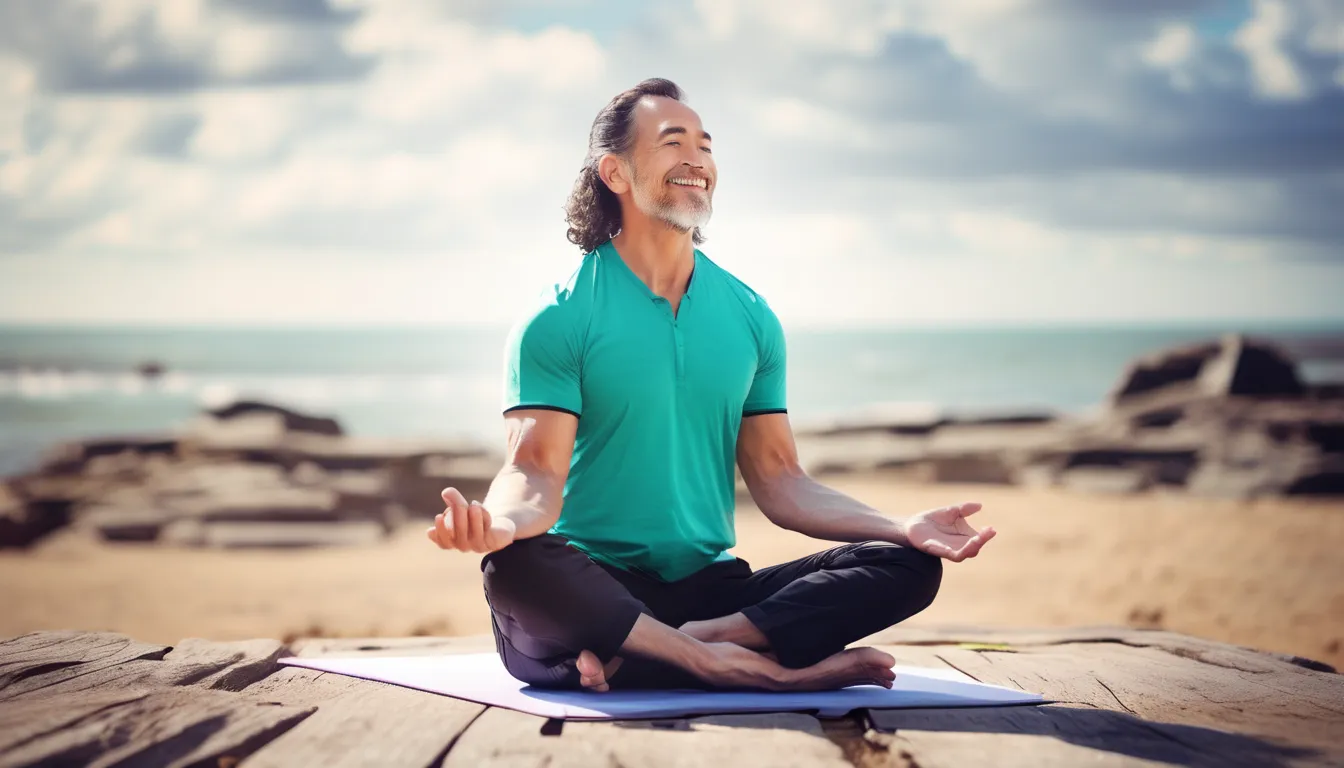When you step onto the mat, you might notice how yoga offers more than just physical exercise; it invites you to explore the connection between movement and mindfulness. As you synchronize your breath with each pose, you not only engage your body but also cultivate a sense of presence that can trans meditation course online m your perspective. This practice can reveal insights about your challenges, both on and off the mat. So, what does it truly mean to integrate mindfulness into your yoga routine, and how can it enhance your overall well-being?
The Essence of Mindfulness in Yoga
Mindfulness is at the heart of yoga, transforming each pose into a journey of self-discovery. When you step onto the mat, you’re not just practicing physical postures; you’re engaging your mind and spirit. You focus on your breath, allowing it to guide your movements and anchor you in the present moment.
As you flow through each pose, you cultivate awareness of how your body feels, noticing sensations, tensions, and areas of ease. This practice invites you to observe your thoughts without judgment. Instead of getting caught up in distractions, you learn to let go and embrace the here and now.
By connecting your mind and body, you enhance your ability to be present, fostering a deeper understanding of yourself. As you explore this essence of mindfulness, you develop a greater sense of clarity and acceptance.
You might find that challenges on the mat mirror life’s obstacles, teaching you resilience and patience. Each session becomes an opportunity to reflect, grow, and nurture your inner self.
Benefits of Combining Movement and Meditation
Combining movement and meditation opens up a world of benefits that enhance your overall well-being. When you integrate yoga into your routine, you’re not just engaging your body; you’re also calming your mind. This synergy helps you develop greater focus and concentration, which can spill over into your daily life.
You’ll likely notice reduced stress levels as you practice mindful movement. As you flow through poses, you cultivate a sense of peace and presence, allowing you to release tension and anxiety. Additionally, the physical activity boosts your mood by increasing endorphin levels, promoting feelings of happiness.
Furthermore, this combination improves your flexibility, strength, and balance, as you harmonize breath with movement. It encourages a deeper connection between your mind and body, fostering self-awareness and emotional resilience.
Lastly, practicing movement and meditation together can enhance your sleep quality. When your mind is quiet and your body is relaxed, you find it easier to drift into restorative sleep.
Key Yoga Practices for Mindfulness
One of the most effective ways to cultivate mindfulness through yoga is by incorporating specific practices that focus on awareness and presence.
Start by paying attention to your breath. As you move through each pose, synchronize your breath with your movements. Inhale deeply as you expand and exhale fully as you release tension. This connection enhances your focus and anchors you in the moment.
Next, practice grounding techniques. Feel your feet connecting with the mat during standing poses. Visualize roots extending deep into the earth, providing stability and strength. This grounding helps you remain present and aware of your body’s sensations.
Incorporate gentle flowing sequences, such as sun salutations. These sequences encourage a meditative state as you transition smoothly from one pose to another, allowing your mind to quiet and your body to flow with intention.
Creating a Mindful Yoga Routine
Creating a mindful yoga routine starts with setting a clear intention for your practice. Think about what you want to achieve—whether it’s stress relief, increased flexibility, or simply finding a moment of calm. This intention will guide your practice and help you stay focused.
Next, choose a time and space that feels inviting. Find a quiet spot where you won’t be disturbed, and dedicate a specific time for your practice. Consistency helps you establish a routine, making it easier to integrate mindfulness into your daily life.
Select poses that resonate with your intention. Begin with gentle stretches to warm up, then flow into poses that challenge you while maintaining a sense of ease.
Incorporate breathwork to deepen your connection to each movement. Remember, it’s not about perfection but rather about being present.
Overcoming Challenges in Mindful Practices
While establishing a mindful yoga routine can enhance your practice, you may encounter obstacles that challenge your focus and commitment. It’s normal to feel overwhelmed by distractions, whether they come from your surroundings, your thoughts, or even your own expectations. Recognizing these challenges is the first step in overcoming them.
Start by creating a dedicated space for your practice. Make it a sanctuary where you can escape the noise of daily life. If distractions persist, try using guided meditations or calming music to help center your mind.
Remember, it’s okay to have off days. Instead of pushing through frustration, give yourself permission to pause and breathe.
You might also struggle with consistency. To combat this, set realistic goals. Instead of committing to an hour every day, aim for shorter sessions that fit your schedule.
Celebrate small victories, and over time, you’ll find it easier to stay committed.
Lastly, practice self-compassion. Embrace the ebbs and flows of your journey. Every challenge teaches you something valuable, and each time you return to your mat, you’re nurturing both your body and your mind.
Conclusion
Incorporating mindfulness into your yoga practice can truly transform your life. By blending movement with meditation, you cultivate self-awareness and resilience, helping you navigate life’s challenges with grace. Whether you’re a beginner or an experienced yogi, embracing this holistic approach allows you to connect more deeply with your body and mind. So, roll out your mat, breathe deeply, and let each pose guide you toward greater peace and understanding in your everyday life.

